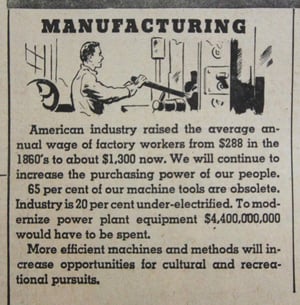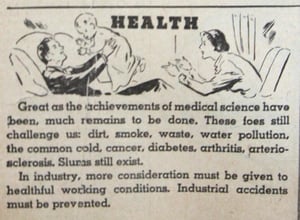One year after a heart attack, a Texas high school teacher received an unexpected invoice from the hospital for a jaw-dropping $108, 951. The amount owed after the teacher’s health insurance plan had reimbursed the hospital for his care and after he had paid the required $1,400 out-of-pocket to his health plan. The bill was the balance of the hospital’s $165,000 procedure, a charge the hospital defended as “reasonable and customary.”
Balance billing is a common practice used by hospitals to recoup costs. It happens when the hospital believes the cost for the procedure and services are more than what the insurance company agreed to pay. And the insured is left with the surprise charge.
If you are confused about what’s happening with health insurance, you are not alone.
THE JOURNEY TO REASONABLE & CUSTOMARY
How did we get here in the first place? The state of our current health insurance did not happen overnight. It evolved over the course of more than 80 years. Through depression, war, recession, and innovation, our health insurance practices, policies and systems were shaped by the many events in our country’s history. Here’s a look back.

From Snake Oil to Lipstick. Prior to the 1900s, elixirs and potions promised to cure all. Traveling salesmen used pop-up presentations to pitch its magic. Hospitals were institutions devoted to the poor and doctors made house calls.
In the first part of the 1900s, healthcare began to evolve with better medicine, vaccines and more skilled physicians. The wealthy could afford care and those who could not were allowed to pay using a sliding scale or bartered for services. Many paid into a welfare fund to cover an emergency.
 Workplace injuries were common and so were the court cases. Individual states began to develop insurance programs to protect employers and their employees. By 1915, employers in 32 states provided some type of workers’ compensation insurance.
Workplace injuries were common and so were the court cases. Individual states began to develop insurance programs to protect employers and their employees. By 1915, employers in 32 states provided some type of workers’ compensation insurance.
The model seemed fool-proof. The injured employee would visit their family doctor and the family doctor were paid by the workers’ comp insurance. But cost-conscious employers found retaining their own doctor more cost-effective. Physicians began to realize their collective power.
THE GREAT DEPRESSION
Prepaid Healthcare. In 1929, hospitals, like businesses, were experiencing the economic impact of the Great Depression. During this time, it wasn’t common practice or affordable to have a checkup. An official at Baylor University Hospital, in Dallas, Texas, hoped to change that. He noticed that even during challenging economic times people continued to buy cosmetics. So he created a way to make paying for health care as affordable as say, the price of a lipstick.
 The Baylor Plan. Baylor tested the idea and enrolled a group of public school teachers in Dallas. For 50 cents a month, the Baylor Plan provided patients with access to the hospital’s medical services. The prepaid plan idea took off and launched, what historians and experts believe to be, the beginning of health insurance.
The Baylor Plan. Baylor tested the idea and enrolled a group of public school teachers in Dallas. For 50 cents a month, the Baylor Plan provided patients with access to the hospital’s medical services. The prepaid plan idea took off and launched, what historians and experts believe to be, the beginning of health insurance.
Hospital Service Plans. From the beginning, the idea was not about making money. The non-profit plans were about protecting people and the charitable organizations running the hospitals.
As the Baylor Plan was adopted and spread to other markets, similar plans were introduced which featured enhanced services and more hospital options. As a result, hospitals looked for ways to control quality and turned to the American Hospital Association (AHA) for guidance with developing its standards.
 Blue Cross Plans. The AHA committee, designated to approve the hospital plans, eventually became the Blue Cross Commission. Established criteria included the ability to improve welfare, cover costs, and the freedom to choose doctors. In addition, each plan was assigned a geographic market. The AHA adopted the Blue Cross symbol as the emblem for meeting these standards and as a way to differentiate itself from other for-profit plans.
Blue Cross Plans. The AHA committee, designated to approve the hospital plans, eventually became the Blue Cross Commission. Established criteria included the ability to improve welfare, cover costs, and the freedom to choose doctors. In addition, each plan was assigned a geographic market. The AHA adopted the Blue Cross symbol as the emblem for meeting these standards and as a way to differentiate itself from other for-profit plans.
In 1933, prepaid, nonprofit hospital service plans, now called Blue Cross plans, were officially classified as insurance and subject to insurance laws. A separate physician’s plan, or Blue Shield, followed five years later. Blue Cross and Blue Shield eventually merged in 1982.
The framework of a health insurance system was now taking form.
THE WAR ECONOMY
Employer-sponsored Health Coverage Becomes a Benefit. World War II, tax code changes, and labor movements were all factors in the rapid growth of employer-sponsored health coverage.

In the 1940s, more women entered the workforce as companies struggled to find labor during the war. A wage freeze prompted employers to look for new ways to attract skilled workers. Health insurance was added as a benefit and became a bargaining tool.
Tax Laws Make Health Insurance More Affordable. In 1943, the IRS made employer-based health care tax free. In addition, new legislation made health insurance a condition of employment which also gave unions more bargaining power. Employees in industries such as mining, steel, and lumber had access to union or on-site employer clinics. In 1954, new laws made the tax advantages even more attractive.
Employers are now the source of health insurance.
(Next in the series: The History of Health Insurance: The Road to Reasonable and Customary. PART II: The Rise of Care and HMOs)










